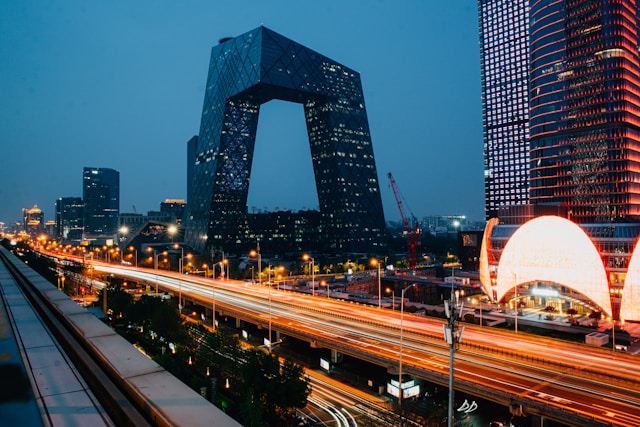
China’s Supreme Court’s Guiding Opinions in June 2020 has set out the circumstances in which Chinese judges should retrieve the Similar Case.
To learn more about the Case System in China, please click here.
The Similar Case Retrieving System means that when judges encounter certain circumstances in trials, they shall search for a case similar to the pending case from the binding judgments, that is, the “Similar Case” (类案), and they shall render judgments referring to the Similar Case.
On 1 June 2020, the Supreme People’s Court (SPC) published the Guiding Opinions on Unifying the Application of Laws and Strengthening Similar Case Retrieval (for Trial Implementation) (“the Guiding Opinions”) (关于统一法律适用加强类案检索的指导意见(试行)). The Guiding Opinions further refine the Similar Case Retrieving System based on the previous explorations of some courts across the country.
1. Under what circumstances should judges retrieve the Similar Case?
China is now facing the pressure of litigation explosion, with an already overwhelming backlog of cases. Since judges do not have enough time to search for Similar Case for each case, the Guiding Opinions only require judges to conduct such searches under the following four circumstances, including:
(1) Where the collegial panel has disputes regarding the application of law, and therefore intends to submit it to professional (presiding) judge session or the adjudication committee for discussion;
(2) Where clear judgment rules are in absence, or the universal judgment rules have not yet formed.
(3) Where the President of the court or the Director of a division asks to conduct Similar Case Retrieving according to the authority of adjudication supervision.
(4) Other circumstance where Similar Cases Retrieving is deemed necessary.
2. Where should Judges retrieve Similar Cases?
In other words, which cases have binding force on judges?
Justices of the Supreme People’s Court (SPC) Liu Shude (刘树德) and Hu Jixian (胡继先) divide the binding cases into three categories in their article “the Understanding and Application of the Guiding Opinions on Unifying the Application of Laws and Strengthening Similar Case Retrieval (for Trial Implementation)” (《关于统一法律适用加强类案检索的指导意见(试行)》的理解与适用) published in the “People’s Judicature” (人民司法) (No. 25, 2020). This article introduces the drafting process and background of the Similar Case Retrieving System.
The three categories of binding forces correspond to the following Similar Cases:
(1) Similar Cases that have obvious binding forces (显性拘束力)
These are the Guiding Cases issued by the SPC. The Guiding Cases and the judicial interpretation are two kinds of norms that the SPC issued in order to guide the case trial of the courts across the country.
(2) Similar Cases that have strong implicit binding forces (强隐性拘束力)
These refer to cases published in the Gazette of the SPC (最高人民法院公报), other cases of typical significance and effective cases decided by the SPC, as well as the reference cases published by and the effective cases decided by the High People’s Court in the province (autonomous regions, or the municipalities).
This category of cases does not have the binding forces as the Guiding Cases. However, according to Chinese law, the higher-level courts may review the judgments of lower-level courts in the appeal or the adjudication supervision procedure. Therefore, such cases may play a strong guiding role for courts in their jurisdiction.
(3) Similar Cases that have weak implicit binding force (弱隐性拘束力)
These are the effective cases decided by the court itself and the higher level people’s court. This category of cases represents the corresponding judicial opinions of this court and the higher level People’s Court.
In practice, Chinese judges are always customed to following the precedents, because of the top-down hierarchical structure in Chinese courts. Therefore, these cases will be highly persuasive in fact.
Besides, the Similar Case Retrieving System requires to search for cases in the past 3 years in priority. As discussed in an earlier post, the Guiding Cases System are to “create history”, which is to provide answers for new questions in time. So is the Similar Case Retrieving System. In other words, normally the relatively new Similar Cases have the referring value.
3. May the litigants influence judges by Similar Cases?
The public prosecution organs, the parties, and their defenders and agents, as well as other litigation participants, may provide Similar Cases for supporting their arguments. In fact, the litigants are more motivated than judges to retrieve Similar Cases.
Judges must respond to the Similar Cases provided by the litigation participants, which means:
(1) Regarding the provided Guiding Cases, because they have obvious binding force, judges shall respond whether to refer it or not and the reasons therefor in the reasoning parts of the judgments.
(2) Regarding other Similar Cases, because they only have implicit binding force, judges may respond by interpreting or clarifying.
4. How to apply the Similar Case?
First, judges shall clarify the results of Similar Case retrieving in the deliberation of the collegial panel, in the discussion of the professional (presiding) judge session and the trial report, or make special Similar Case retrieving reports and archive with the case for reference.
Second, if the Similar Case retrieved by judges is a Guiding Case, they shall refer to the case to render the judgment; if the retrieved Similar Case belongs to other categories, they may refer to the case for judgments.
Contributors: Guodong Du 杜国栋 , Meng Yu 余萌






